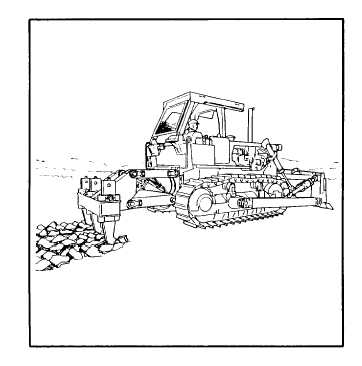|
| |
TM5-2410-237-10
b. Hard to Rip Material.
(1) Use one shank in tough-to-rip material
(solid rock) or material that tends to
break out in large slabs or pieces
(granite).
(2) Always use center shank when one-
(3) Cross rip only when necessary.
(4) When ripping for scraper
loading, rip in same direction that
scrapers will load.
(5) Inmost cases it is desirable to rip as
deeply as possible. Sometimes it is
better to rip at partial depth and
remove the material in its natural
layers.
(6) Keep several inches of material on top
of the unripped formation to cushion
the machine and provide traction.
c.
d.
e.
f.
shank ripping.
Adphalt Road Surfaces. Raise ripper
shanks to lift out and break material,
Concrete Road Surfaces. Use a single
ripper shank. Ripper is especially
effective in severing reinforcement rods
or mesh.
Packed Soil, Hard Pan, Clay, Shale or
Cemented Gravel.
Three shanks work
well in these materials. Use as many
shanks as possible to break material to
desired size, without stalling or hanging
up the tractor.
Rock with Fractures, Faults, and Planes
of Weakness.
Use two shanks where
rock breaks out in small pieces, and the
tractor can handle the job easily. When
tractor begins to stall or tracks spin, use
only the center shank.
(7) When final material size must be
relatively small, close spacing of
passes is recommended.
2-39
|

